Bleeding hearts: how to grow and care for dicentra
Find out how to grow bleeding hearts with our expert tips on planting and caring for dicentra, plus propagation and problem solving

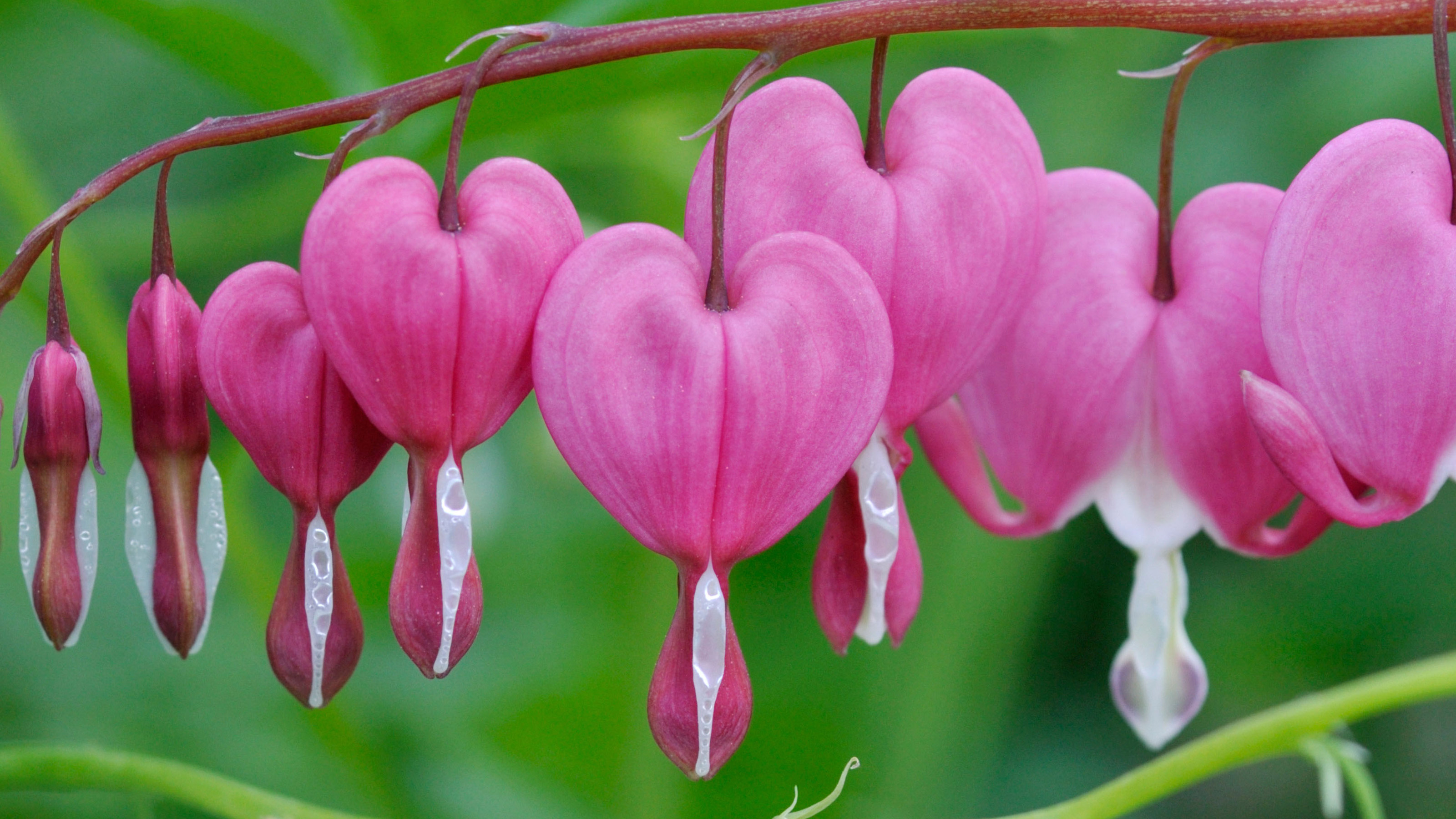
Bleeding hearts are treasured hardy perennial plants, mainly spring-flowering. They are winter hardy in most zones, easy to grow, and colorful without being jazzy. Their flowers are instantly recognisable and appear in the shape of pretty, heart-shaped lockets.
There are several groups of bleeding hearts (also known as dicentra) available to grow. The most common group are the dwarf, shade-loving, North American native wildflowers. These often have dainty, silvery green or blue-green foliage, and flowers in red or pink shades, and white. A group of similar varieties appreciate more sun.
A small third group are taller and more elegant, with more dramatic foliage. Meanwhile, a rarely seen fourth group of climbing varieties has yellow flowers. If you’re contemplating showy flowerbed ideas, bleeding hearts are ideal. They form slowly spreading mounds that work well amongst shrubs and shady patio beds.
Knowing how to grow bleeding hearts will bring weeks of color to those shady spots in your garden. Many bleeding hearts make effective ground cover in shade, though they tend to fade away and die back after flowering – especially in zones with hot summers. Neighboring plants usually spread out into their space during summer.
Often seen in nurseries and garden center departments of big box stores, a wider range of bleeding hearts is available by mail order and online. In a couple of years, these plants can be divided and replanted to cover a wider area. Here we show you how to add a splash of romance to your garden with delightful dicentra that are sure to find a place in your heart.
What kinds of bleeding hearts are there?
There are four main kinds of bleeding hearts. Most are North American native wildflowers that are ideal in the shade, where their prettily divided foliage sets off the red, pink or white lockets perfectly.
- Some bleeding hearts stay compact, making steadily spreading clumps. Others spread more quickly and make good weed-suppressing ground cover without ever becoming invasive. These are all varieties of Dicentra eximia, the fringed bleeding heart, from eastern States, and Dicentra formosa, the western bleeding heart. They are often sold bare root or in pots in flower. Popular varieties include ‘Luxuriant’ and ‘Langtrees’.
- There is an increasingly large group that look similar, but prefer more sun. These will work well with sunny pergola ideas, or as part of thoughtful south facing garden ideas with access to prolonged sunshine. Varieties include ‘King of Hearts’ and ‘Fire Island’.
- Another important but smaller group includes varieties that make taller plants developing a mass of longer, elegantly arching stems from which the larger red, pink or white lockets sway in the breeze. These are the old-fashioned bleeding hearts, a few of which also have bright yellow foliage. Popular varieties include Dicentra spectabilis and ‘Alba’. Plants in this group are increasingly offered under the name Lamprocapnos.
- There is also a fourth group of vining bleeding hearts that cling to their supports with tendrils. They have lockets in a similar shape, but in shades of yellow. Dicentra scandens fits here. Plants in this group are increasingly offered under the name Dactylicapnos.
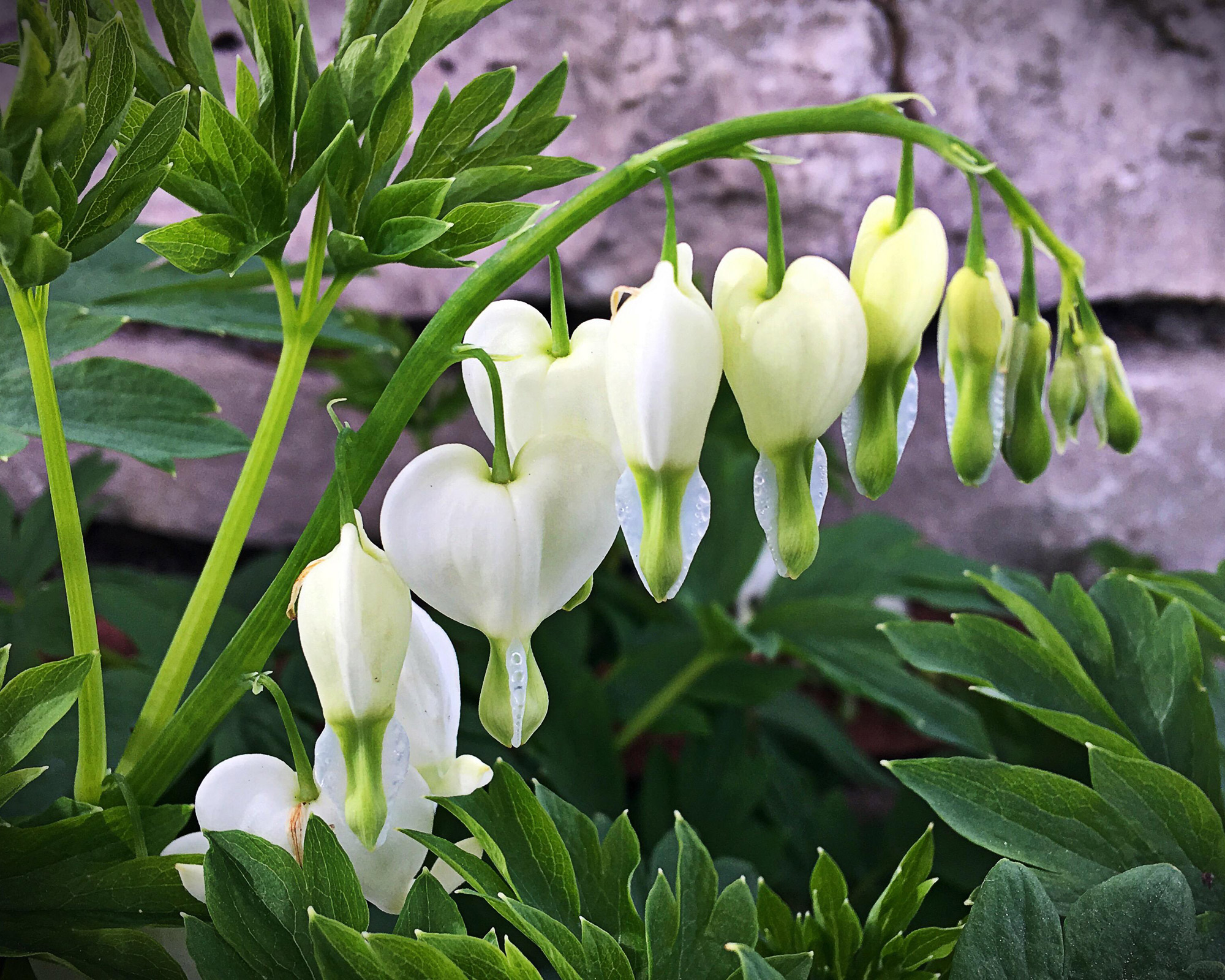
Where should I plant bleeding hearts?
Native bleeding hearts, and their many varieties, are best planted in part shade. In areas with cooler summers, they can be planted in full sun as long as they are not allowed to dry out. Some newer varieties will take more summer sun.
Bleeding hearts prefer humus-rich soil, but are shallow rooted so they do well in poor soils if the upper layers are improved. A slightly acid soil is preferred; our guide to soil types can help if you need to check yours. A pH of 6.0-6.5 is ideal, but most varieties are adaptable.
In small gardens, plant single plants of individual varieties – they will steadily spread. If more space is available, plant in groups of three or five. Remember that in regions with hot summers, the plants may die back in summer. Make sure there are nearby perennials such as hostas or brunneras with foliage to take over the space.
Climbing bleeding hearts are happy in good soil that is neither parched nor waterlogged, but they like a mature shrub or garden fence against which they can cling. Similarly, combine with well-supported screening or trellis ideas and they will flourish.
Dicentra spectabilis and its varieties can take more sun and are much deeper rooting, preferring rich conditions and good drainage. These types of bleeding hearts will die back in summer.

When is the best time to plant bleeding hearts?
One of the joys of knowing how to grow bleeding hearts is discovering how easy-going they are in terms of planting and establishing. Bleeding hearts bought in pots can be planted whenever the ground is not frozen. Fall is the best time, as this gives the plants time to settle before winter and they will have started to establish themselves by the time spring flowering begins.
Spring is the next best time to plant dicentra. Bleeding hearts can be planted when growing and flowering, but pay careful attention to watering until the plants are established. Knowing the best time to water plants will help your bleeding hearts get used to the space.
Some bleeding hearts, especially Dicentra spectabilis, are supplied by mail order as bare-root plants (this means they come dormant, with little soil around the roots). The thick, white, thongy roots are best planted in the fall. However, they can also be planted as soon as the soil thaws out in spring. In zones 7 and 8, they can be planted at any time as long as the soil is not frozen.
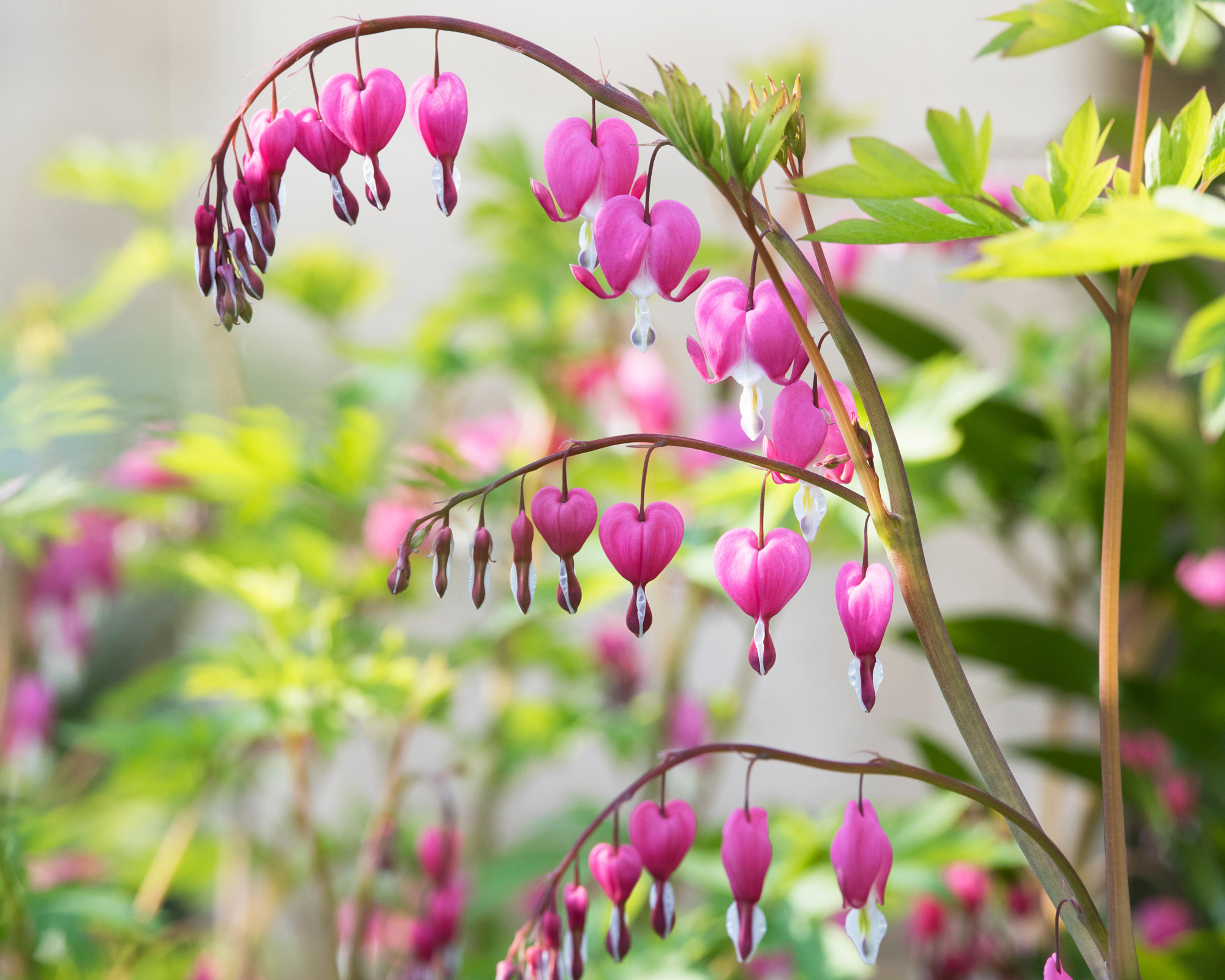
How do I plant bleeding hearts?
All bleeding hearts will benefit from soil amendment before planting. Potted bleeding hearts also appreciate a drench with liquid feed the day before planting. The many varieties of native bleeding hearts prefer a humus-rich soil, so start by improving the soil with compost (getting to grips with composting will enable you to create your own). Deep preparation is unnecessary as roots are relatively shallow.
Then just follow these simple steps:
- For bleeding hearts plants that are supplied in pots, plant with their crowns at or about soil level.
- Small bare root plants of Dicentra spectabilis and its varieties should be planted 1in (2.5cm) below soil level, with larger plants 2in (5cm) deep.
- Water well with liquid feed after planting. Ensure that plants never dry out in their first season, unless they start to die down for the summer.

How do I care for bleeding hearts?
For the most stunning bleeding hearts, make sure your dicentra don’t dry out during that first spring and early summer. In hot climates, plants of native bleeding hearts may enter a dormant period in summer but in autumn, especially, with good rainfall, a second period of blooming may occur. When the plants begin to look tired and dry, they can be snipped over with your best secateurs and the dying top growth added to the garden compost.
You will find mulching with weed-free garden compost or bagged soil amendment keeps the roots cool and moist. Apply in autumn, as your bleeding hearts should be interplanted with spring bulbs (our guide to planting bulbs can help with this). The mulch needs to be in place before the bulbs start to emerge. If spring is unusually dry, irrigation may be necessary.
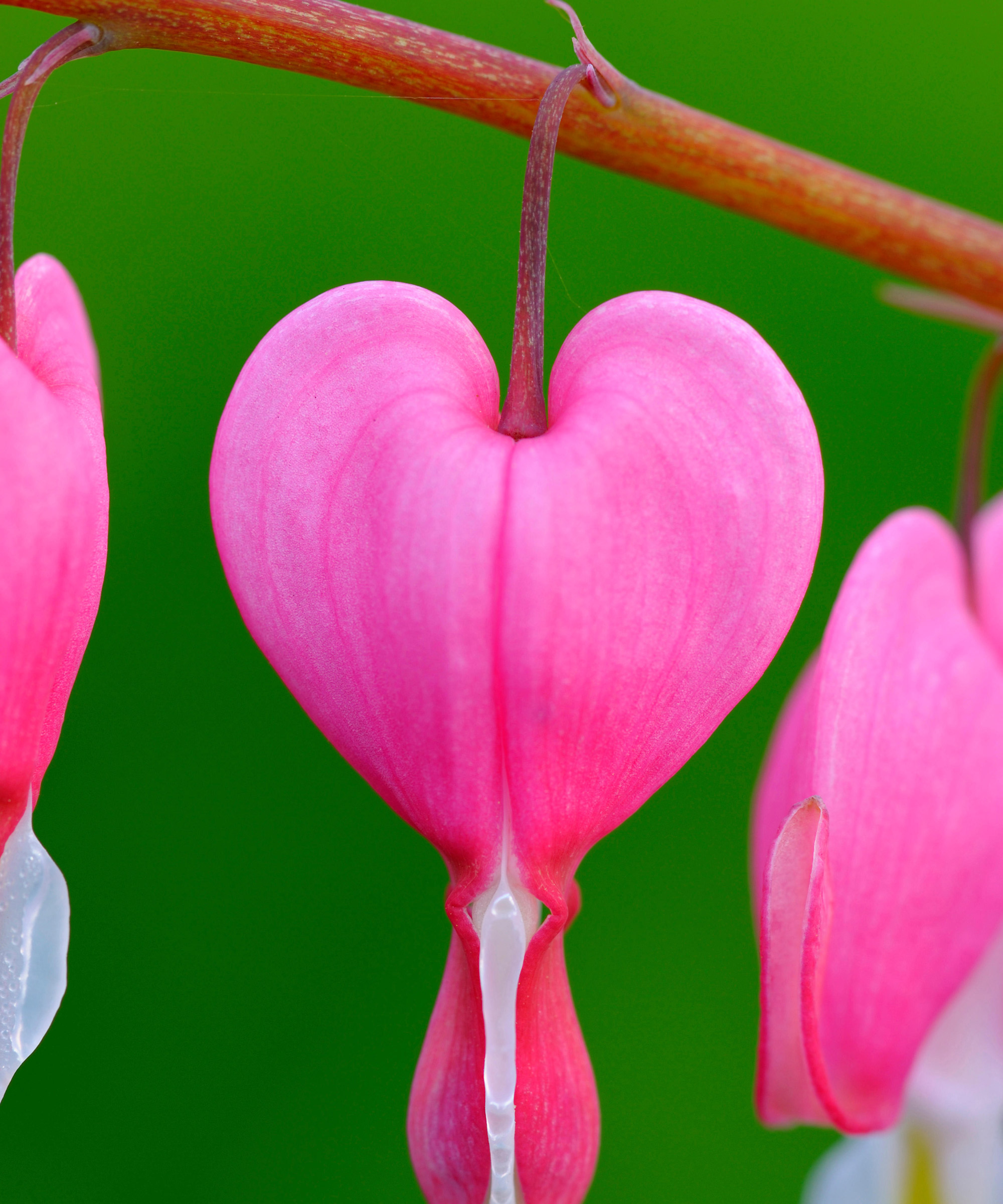
How do I make more bleeding hearts?
All kinds of bleeding hearts, except the vining types, will produce a few seeds after flowering. These fall around the existing plants. Some may germinate and grow as self-sown seedlings, eventually maturing into flowering plants. These can be dug up as they start to grow in spring and replanted where you prefer them to grow, or you can transplant seedlings to give to friends. However, they may not be identical to the varieties from which they came.
Plants of native bleeding hearts can be dug up and divided for replanting at any time when the soil is frost-free in late winter and spring. The roots are fragile, so pull apart carefully and replant the most vigorous pieces from the edge of the plants, discarding weaker growth from the centre. Grow alongside the best evergreen perennials and the best foliage plants to showcase your new bleeding hearts at their best.
Plants of old-fashioned bleeding hearts are best left to mature into specimen-size clumps. However, if you want to try dividing them, dig them up in early spring. Use an old kitchen or bread knife to cut the woody crowns into smaller pieces and replant straight away.

What problems are there growing bleeding hearts?
If you want to keep on top of potential problems with your bleeding hearts, the good news is that there aren’t too many issues to worry about. Just stay vigilant for the following and act accordingly:
- Slugs and snails can be a nuisance, but knowing how to get rid of slugs can be done creatively and organically. If they cause repeated problems, avoid using bark mulches in which they like to hide.
- Be sure not to mulch over the crowns of the plants as this may cause rots. Poor drainage can also be a problem, and soggy soil is a killer. Watch out for waterlogging. The soil needs to be moist but well-drained.
- Bugs are rarely a problem, although aphids may attack old-fashioned bleeding hearts. You can use an organic pest spray, but these plants can tolerate a small infestation.
Don’t panic if your dicentra looks like it is dying in the fall: it is likely going through its natural cycle. The stems and leaves die back naturally in the autumn. In climates with hot summers, they can die back sooner.
If the leaves on your bleeding hearts turn yellow, don’t worry. Two varieties – ‘Gold Heart’ with red flowers, and ‘White Gold’ with white flowers – have been bred to grow yellow leaves. Other varieties whose leaves turn yellow are just in need of watering, or dying back naturally.

Can bleeding hearts survive frost?
Plants of most bleeding hearts are frost-hardy down to zone 4, and perhaps even zone 3. Only in areas with the very coldest of winters is there a risk that the crown or roots might be damaged. Knowing how to protect plants from frost makes it less likely that they will fall foul of cold snaps. If the plants have started into growth and frost threatens, cover with fleece or an old bed sheet to provide protection.
Varieties of Dicentra spectabilis have new spring growth that is very soft and juicy, and a light spring frost might kill it. However, new shoots soon emerge from the crown of the plant, and in a few weeks the damage will not be noticed. Native and ground covering varieties are less likely to suffer damage from spring frost; if they are caught, they soon recover.

Are bleeding hearts toxic?
All parts of dicentra plants contain chemicals that are toxic to humans and pets. However, although humans can suffer from seizures or liver problems from ingesting large quantities, this is not a tempting plant to eat. Large quantities must be eaten before problems occur. Just bear in mind that the sap may cause skin irritation in some people – wearing your best gardening gloves should help protect you, just in case.
Dogs, and especially horses, are affected more often and if you suspect that your animals have eaten bleeding hearts, you should contact your vet immediately. Fortunately, bleeding hearts have some deer resistance.
Although deer will sometimes eat dicentra if other food is unavailable, they are generally left untouched. Old-fashioned bleeding heart Dicentra spectabilis, in particular, seems deer-resistant.
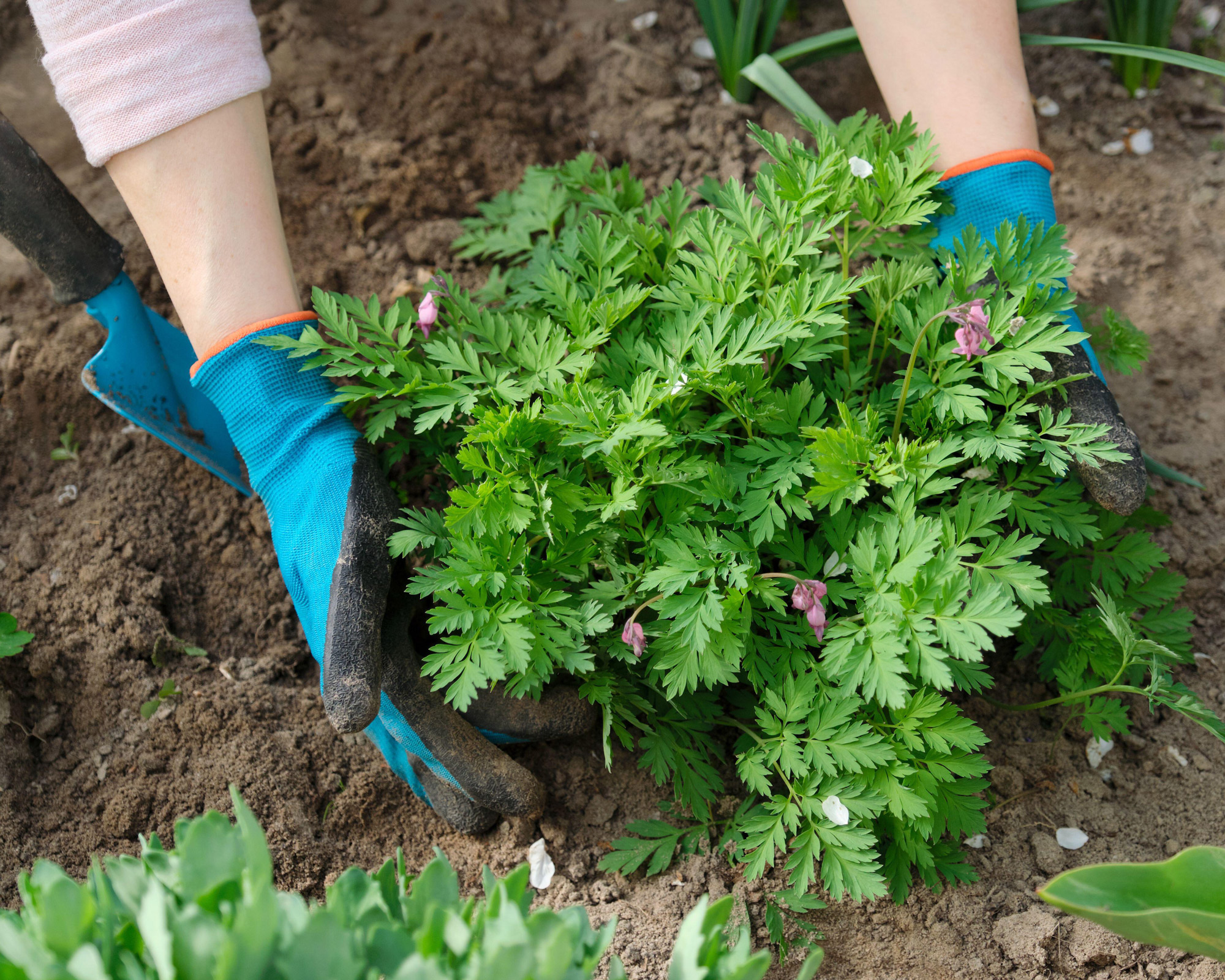
How to keep bleeding hearts blooming
Most bleeding hearts flower naturally in the spring, so flowering usually tails off in summer. Ensuring that the roots stay moist in spring is the most important way to help keep them blooming, so make sure that you are watering plants as and when necessary. Spreading mulch in the fall is also a good technique, as this helps retain moisture in the soil.
Only the yellow-flowered vining types flower naturally later in the season, although some newer varieties such as ‘King of Hearts’ have been developed to bloom for longer. So make room for more than one variety in your garden to extend the flowering season and enjoy your bleeding hearts for even longer.
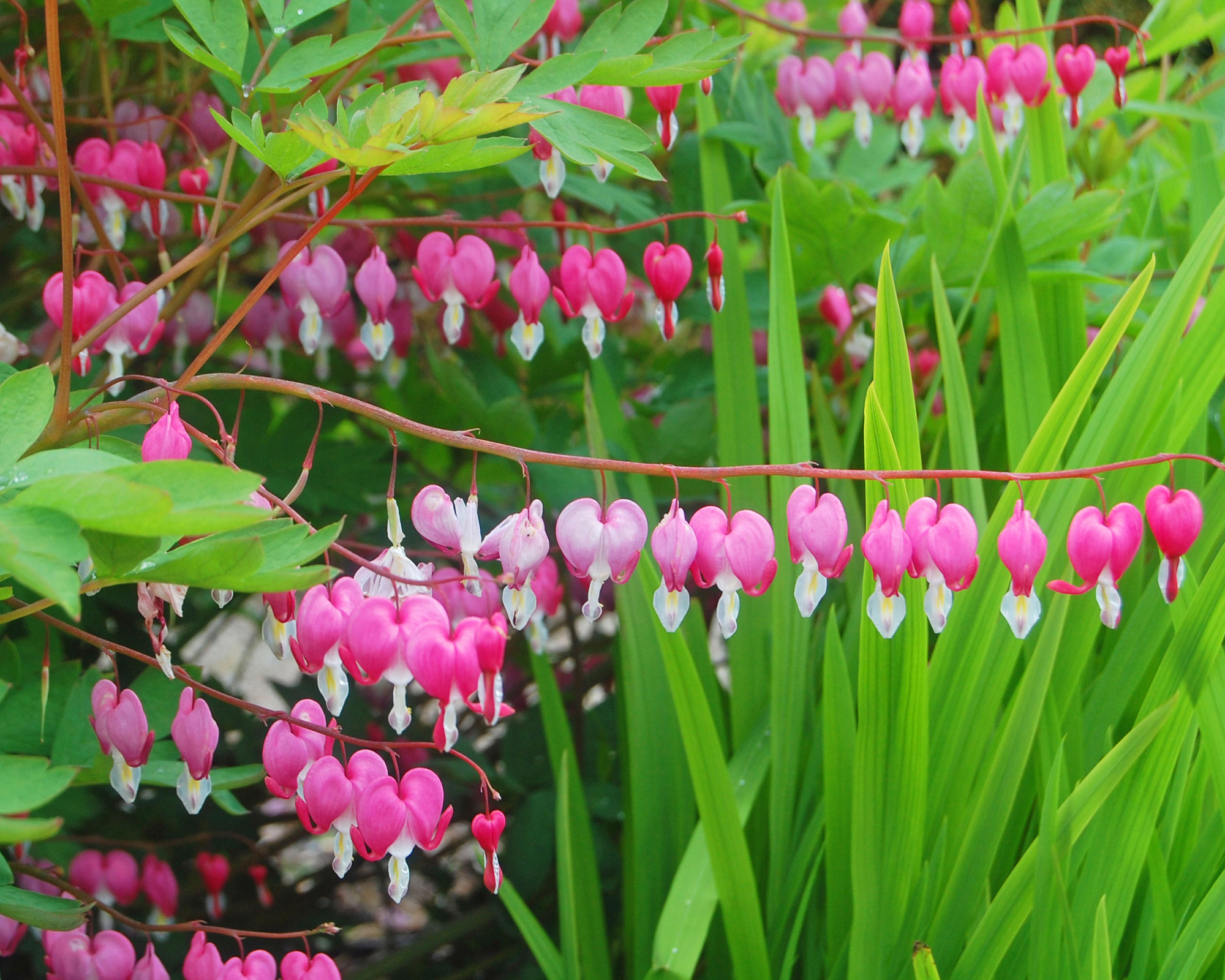
Where to buy bleeding hearts
If you’d like to grow bleeding hearts, you can start them from seeds, plugs, potted plants or bare root options. Here are our suggestions for the best places to buy. There’s a huge range available online and at the garden center, with varieties tailored to both shade and sunshine. Bare root options will need to be planted as soon as possible. Use our quick links below for an easy way to start.
- Where to buy bleeding hearts in the US:
- Shop bleeding hearts seeds at Amazon
- Shop bleeding hearts plants at Burpee
- Shop bleeding hearts plants at Dancing Oaks
- Shop bleeding hearts plants at Home Depot
- Shop bleeding hearts plants at Plant Delights
- Shop bleeding hearts seeds and plants at Walmart
- Shop bleeding hearts plants at White Flower Farm
Where to buy bleeding hearts in the UK:
- Shop bleeding hearts seeds at Amazon
- Shop bleeding hearts plants at Crocus
- Shop bleeding hearts plants at Dobies
- Shop bleeding hearts plants at Hayloft
- Shop bleeding hearts plants at J Parker’s
- Shop bleeding hearts seeds and plants at Sarah Raven
- Shop bleeding hearts plants at Suttons
- Shop bleeding hearts plants at Thompson & Morgan
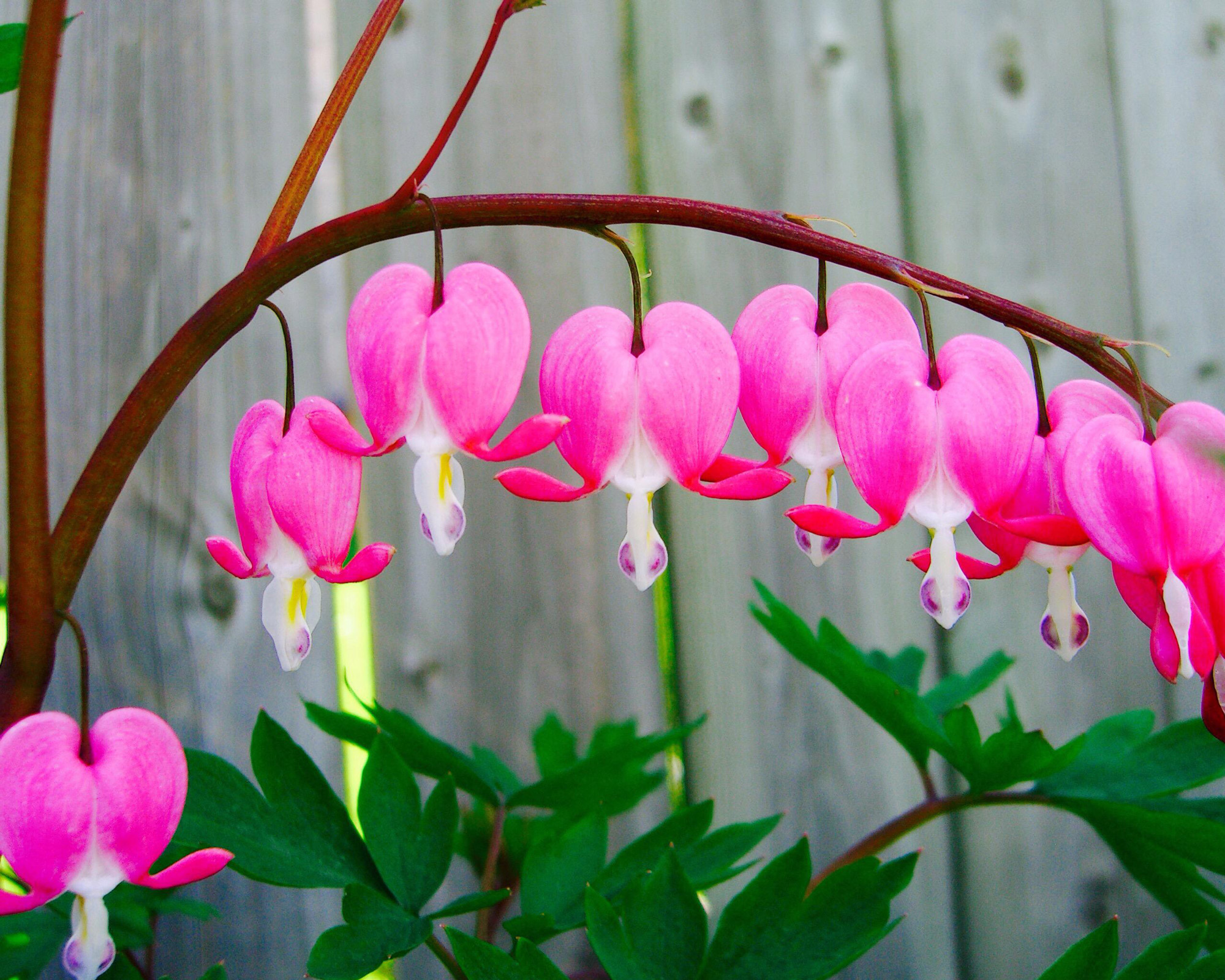

Graham Rice is a garden writer who has won awards for his work online, and in books and magazines, on both sides of the Atlantic. He is a member of a number of Royal Horticultural Society committees and the recipient of the 2021 Garden Media Guild Lifetime Achievement Award.
